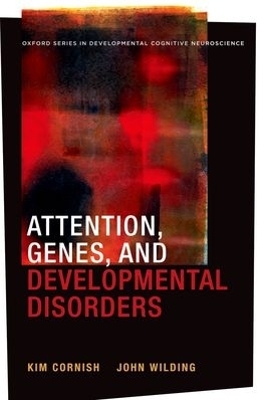
Attention, Genes, and Developmental Disorders
Oxford University Press Inc (Verlag)
978-0-19-517994-1 (ISBN)
The past decade has seen a burgeoning of research on the subject of attention. This research has been facilitated by advances on several fronts: New methods are now available for viewing brain activity in real time, there is expanding information on the complexities of the biochemistry of neural activity, individual genes can be isolated and their functions identified, analysis of the component processes included under the broad umbrella of "attention" has become increasingly sophisticated, and ingenious methods have been devised for measuring typical and atypical development of these processes, from infancy into childhood, and then into adulthood.
In this book, Kim Cornish and John Wilding are concerned with attention and its development, both typical and atypical, particularly in disorders with a known genetic etiology or assumed genetic linkage. Tremendous advances across seemingly diverse disciplines - molecular genetics, pediatric neurology, child psychiatry, developmental cognitive neuroscience, and education - have culminated in a wealth of new methods for elucidating disorders at multiple levels, possibly paving the way for new treatment options. Cornish and Wilding use three specific-yet-interlinking levels of analysis: genetic blueprint (genotype), the developing brain, and the behavioral-cognitive outcomes (phenotype), as the basis for charting the attention profiles of six well-documented neurodevelopmental disorders: ADHD, autism, fragile X syndrome, Down syndrome, Williams syndrome, and 22q11 deletion syndrome. Their overarching aim in this book is to provide the most authoritative and extensive account to date of disorder-specific attention profiles and their development from infancy through adolescence.
Kim Cornish holds professorships at McGill University, Montreal, Canada, and Monash University, Melbourne, Australia. Professsor Cornish received her Ph.D. in Neuropsychology from the University of London in 1991 and currently directs the Monash Developmental Neuroscience and Genetic Disorders Laboratory. From 2001-2009 she held the Canada Research Chair in Developmental Neuroscience and Education at McGill University. John Wilding is Emeritus Reader in Psychology at Royal Holloway, University of London. He received his Ph.D in Psychology from the University of London in 1970 and has written books on perception and (with Elizabeth Valentine) on superior memory ability. Together, their collaborative work has resulted in numerous scientific publications that have gradually revealed the complexities of gene-environment interactions and the need for subtle hypothesis-driven paradigms that can tap attention pathways in typical and atypical populations. These findings demonstrate the need to analyze more precisely the notion of "impaired attention" that has become the focus of popular concern, in order to understand and remedy the problems that challenge many children throughout the course of their development.
Preface
Chapter 1: Advances in attention, genes, and developmental disorders: an introduction
Section I: Attention, Genes and Brains
Chapter 2: What is attention?: Navigating its complex history and facing the challenges ahead
Chapter 3 Genes and atypical attention
Chapter 4 Brains and atypical attention
Section II: Measuring Attention
Chapter 5: Measuring attention at the behavioral level: rating scales and checklists
Chapter 6: Measuring attention at the cognitive level: tasks and methods
Section III: Development of Typical and Atypical Attention
Chapter 7: Attention over development: from infancy to adolescence
Chapter 8: Atypical attention: Attention Deficit/Hyperactivity Disorder (ADHD)
Chapter 9: Atypical attention: genetic developmental disorders
Section IV: Treatment Approaches and Avenues for Future Research
Chapter 10: Treating attentional impairments
Chapter 11: Conclusions and some pause for thought
| Erscheint lt. Verlag | 2.12.2010 |
|---|---|
| Reihe/Serie | Developmental Cognitive Neuroscience |
| Zusatzinfo | 3 color halftones, 2 B&W Halftones, 33 B&W linearts, 7 combo illustrations |
| Verlagsort | New York |
| Sprache | englisch |
| Maße | 241 x 163 mm |
| Gewicht | 967 g |
| Themenwelt | Geisteswissenschaften ► Psychologie ► Allgemeine Psychologie |
| Geisteswissenschaften ► Psychologie ► Entwicklungspsychologie | |
| Geisteswissenschaften ► Psychologie ► Verhaltenstherapie | |
| Medizin / Pharmazie ► Medizinische Fachgebiete ► Pädiatrie | |
| Naturwissenschaften ► Biologie ► Humanbiologie | |
| Naturwissenschaften ► Biologie ► Zoologie | |
| ISBN-10 | 0-19-517994-3 / 0195179943 |
| ISBN-13 | 978-0-19-517994-1 / 9780195179941 |
| Zustand | Neuware |
| Informationen gemäß Produktsicherheitsverordnung (GPSR) | |
| Haben Sie eine Frage zum Produkt? |
aus dem Bereich


